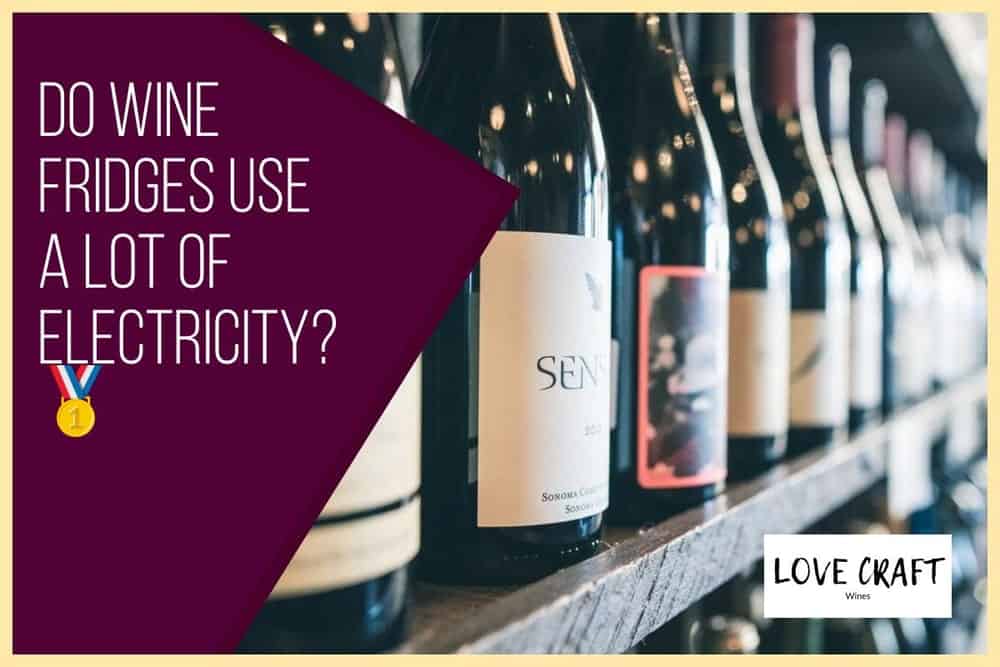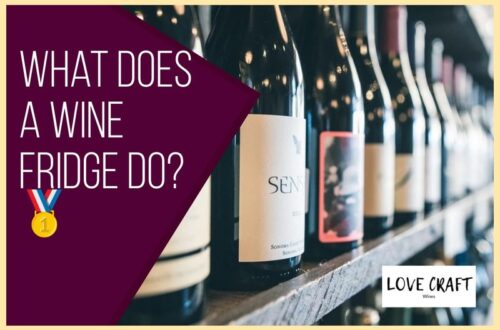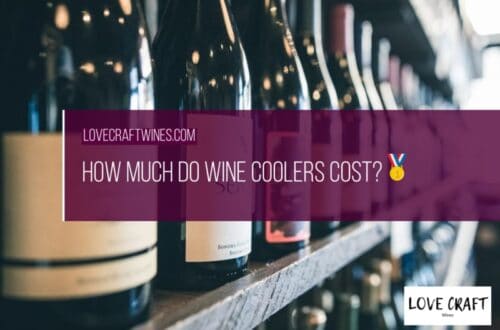fridges are a great way to store your , whether you’re looking to store your collection of white or , or both perhaps.
fridges are available in a variety of sizes and styles and come with a variety of extra features including cooling fans, touch screens & more.
fridges can be purchased from any major retailer or online at sites like Amazon. However, which one should you buy? Well, there are a number of considerations, including the amount of electricity a particular consumes.
Some fridges use more energy than others, for example, a will typically be more energy efficient than a . Then you’ll find a will require more energy than a single-zone unit.
However, what’s certain is that a that uses more electricity will result in higher electricity bills.
Let’s look at a few different types of , to see how the electrical consumption of running it vary.
Table of Contents
How Much Power Does a Wine Fridge Use?
The energy consumption has been noted in watts, also known as power. Wattage can be understood as the rate of energy over time. One watt is the equivalent to one joule (unit of energy) per second [Smarter Business].
We’ve also written an article here on ‘Are fridges expensive to run‘, where we break down the entire yearly costs of owning a small/medium and large .
Small-Sized
A typical will store anything from 6 bottles through to 18 bottles. We’ve displayed all of the capacities within this range, and we’ve provided the typical electrical consumption (wattage) of each one:
6 – 50 watts
8 – 60 watts
10 – 70 watts
12 – 80 watts
18 – 90 watts
Medium-Sized
A typical medium-sized will store anything from … bottles through to … bottles. We’ve displayed all of the capacities within this range, and we’ve provided the typical electrical consumption (wattage) of each one:
20 – 100 watts
25 – 110 watts
28 – 120 watts
35 – 120 watts
40 – 120 watts
45 – 120 watts
Large-Sized
A typical large will store anything from 50 bottles through to 300 bottles. We’ve displayed all of the capacities within this range, and we’ve provided the typical electrical consumption (wattage) of each one:
50 – 120 watts
100 – 150 watts
150 – 150 watts
200 – 150 watts
250 – 150 watts
300 – 150 watts
Why does a use so much electricity?
has been a symbol of prestige and luxury for centuries. collectors with a large collection may feel the need to store their in a -controlled environment. However, many people are not aware that cooling units used to store have a significant impact on their monthly energy bills.
These units can use a lot of electricity, especially if they’re in a location that experiences unusually warm temperatures. It can also use a lot of electricity, as it’s on 24/7.
It is important for collectors to be aware of how much electricity their is using. It can be a huge factor in one’s monthly energy bill.
How important is it to keep your at the right level?
is an important factor in managing the quality. fluctuation can cause the to go bad and lose its flavor.
is a very important factor in managing the quality of . Fluctuations in can lead to wines going bad, meaning they lose their flavor and aroma.
The right storage for wines depends on how it’s being stored. For instance, wines stored at a warm will not last as long as those stored at a cool one, which means that they will need to be consumed more quickly. In contrast, wines stored at a will last longer but may develop off-flavors if not consumed soon enough because of slower oxidation processes that occur with lower temperatures.
What are some of the major benefits of having an energy-efficient ?
is a favorite drink of many, but storing it can be difficult. fridges are energy efficient and help maintain the ‘s flavor.
In this section, we will discuss some of the benefits to having an energy-efficient in your residence and how it can help maintain the flavor of the .
– fridges that are energy efficient will use less electricity than other types of refrigerators do. This not only means that you’ll be paying less, because you’ll require less energy, but who knows the prices of electricity in the future – According to Statista, it’s predicted that electricity prices will increase similar to that of other energy sources like coal, gas and oil.
– More environmentally friendly as it takes less energy to run
Conclusion
To conclude, an energy-efficient is the best possible solution to help minimize electricity costs. The saves money in the long term and is more environmentally friendly… Win, win!
The typical power/energy consumption by a wine refrigerator is 120 watts.






